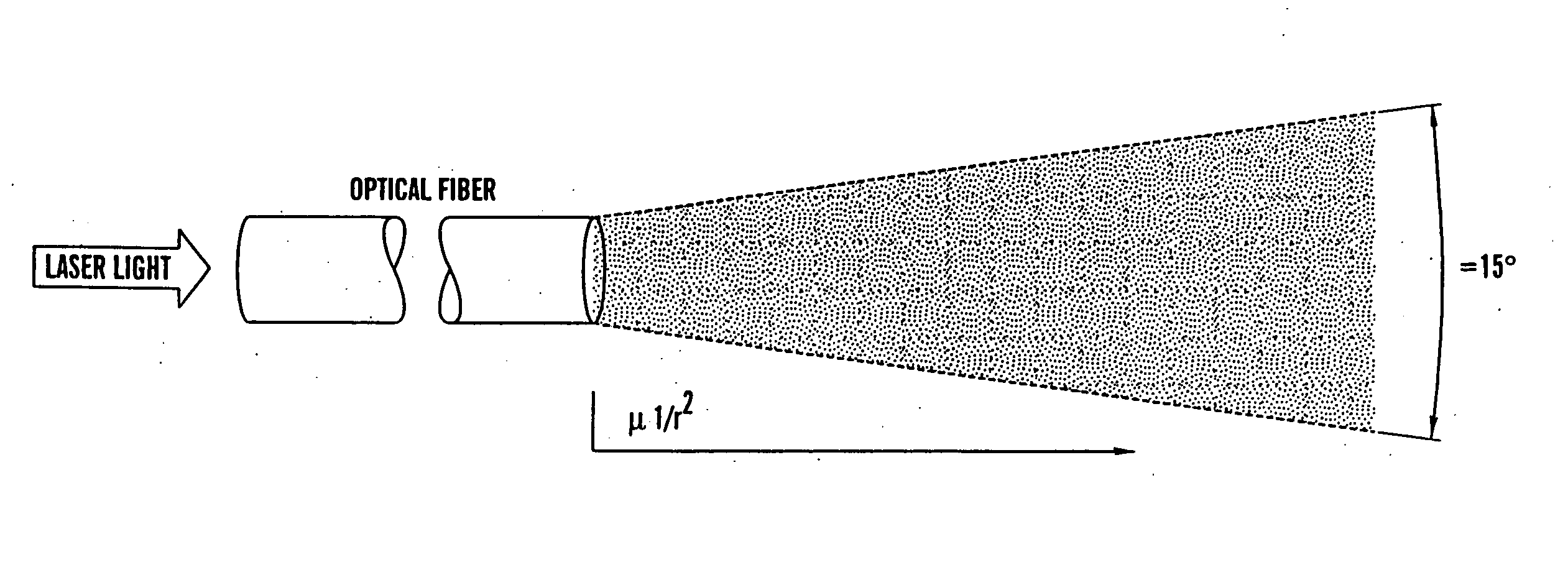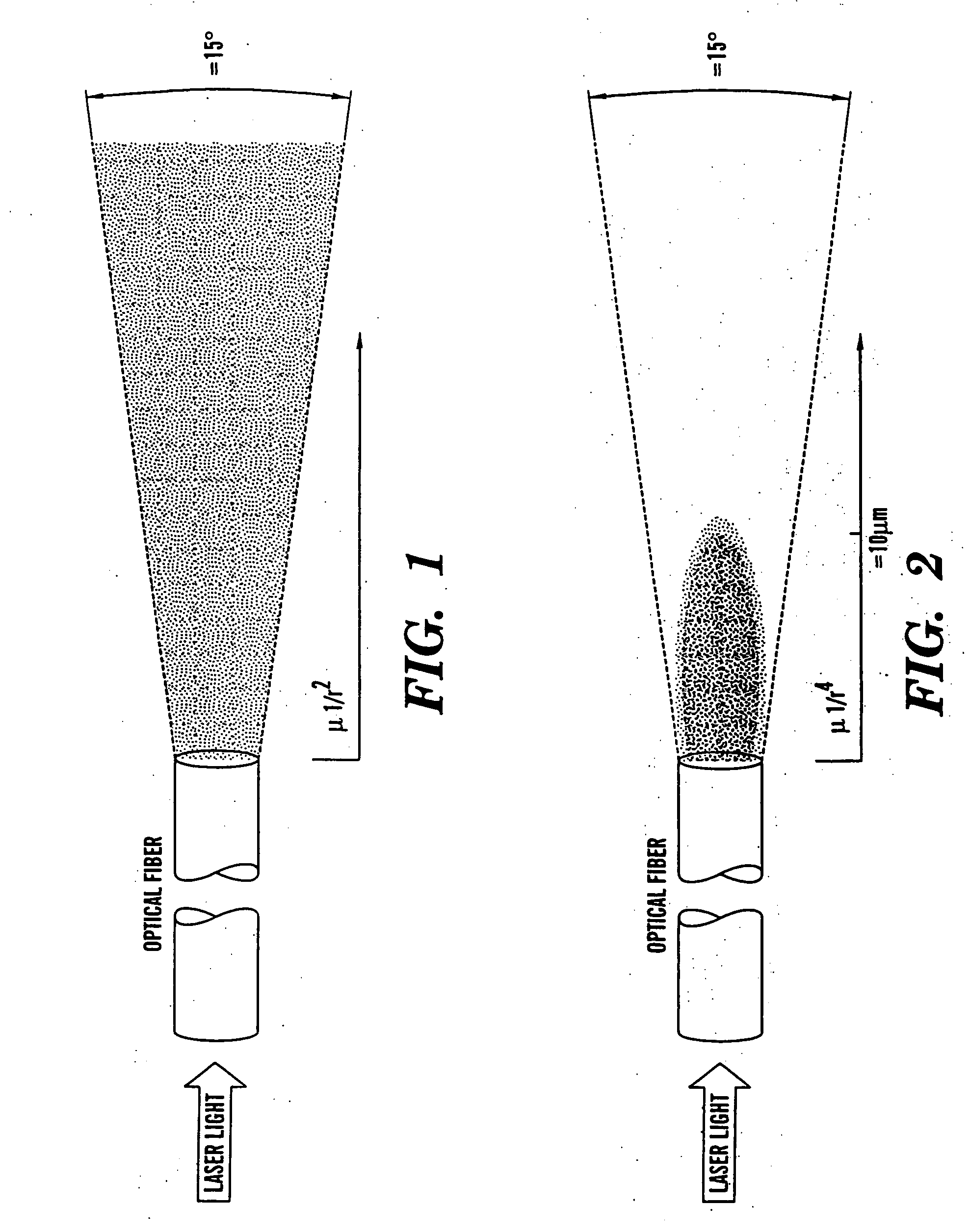Optical fiber delivery and collection system for biological applications such as multiphoton microscopy, spectroscopy, and endoscopy
a technology of optical fiber and biological applications, applied in applications, instruments, diagnostic recording/measuring, etc., can solve the problems of insufficient volume observed, insufficient angular spreading, and insufficient spatial resolution, etc., to achieve sufficient spatial resolution, convenient resolution, and use the effect of spatial resolution
- Summary
- Abstract
- Description
- Claims
- Application Information
AI Technical Summary
Benefits of technology
Problems solved by technology
Method used
Image
Examples
example 1
Delivery of Nanojoule Femtosecond Pulses Through Large-Core Microstructured Fibers
This example reports on the delivery of femtosecond pulses through large-core MFs. 100-fs input pulses, which were negatively prechirped with a grating precompensator, were coupled into MFs with core diameters of 15 and 25 μM. The excitation of the fundamental mode was readily achieved, and only weak coupling to higher-order modes was observed even when the fibers were tightly bent. Under similar conditions, a standard SMF delivers pulses more than 10 times longer than those delivered by MFs.
The experiments involved the use of a standard SMF and two types of MF (commercially available from Crystal-Fiber A / S) (see FIG. 5). The parameters of the first MF (MF1) were core diameter, 15 μm; pitch, 11 μm; and hole diameter, 6.6 μm. The second MF (MF2) had a core diameter of 25 μm and an air-filling fraction of nearly unity. An SMF fiber designed for single-mode operation at 800 nm was also utilized. The l...
PUM
 Login to View More
Login to View More Abstract
Description
Claims
Application Information
 Login to View More
Login to View More - R&D
- Intellectual Property
- Life Sciences
- Materials
- Tech Scout
- Unparalleled Data Quality
- Higher Quality Content
- 60% Fewer Hallucinations
Browse by: Latest US Patents, China's latest patents, Technical Efficacy Thesaurus, Application Domain, Technology Topic, Popular Technical Reports.
© 2025 PatSnap. All rights reserved.Legal|Privacy policy|Modern Slavery Act Transparency Statement|Sitemap|About US| Contact US: help@patsnap.com



